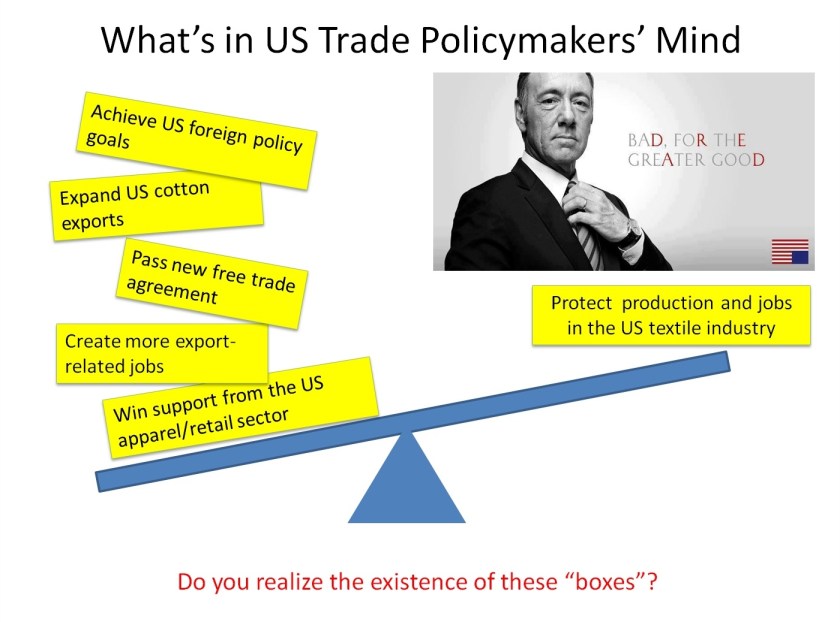Earlier this year, Wal-Mart Store Inc. announced its commitment to buy $250 billion “Made in the USA” products (including textiles and apparel) over the next 10 years ($50 billion annually) with the hope to “help spark a revitalization of U.S.-based manufacturing” and “create jobs in America”. According to the Hoover’s, Wal-Mart’s cost of goods (i.e. sourcing cost for merchandise sold) totaled $358 billion in fiscal year 2013, suggesting $50 billion will account for around 10-14% of its total sourcing portfolio.
Wal-Mart’s campaign has received positive feedback from the US textile and apparel industry. As reported by the WWD, the U.S. textile industry sees Wal-Mart’s movement an encouraging and “sincere commitment”. Bill Jasper, the outgoing chairman of the National Council of Textile Organizations (NCTO) and CEO of Unifi Inc believed that “manufacturing in general across the United States is in a more favorable position than we’ve seen for some time” and “this is an environment for growth in U.S. textile manufacturing”. As an example, Unifi Inc has spent millions of dollars upgrading its equipment and expanding the company’s US-based cloth mill. However, Bill also realizes the market risks involved in the investment decision, which may not happen without Wal-Mart’s “assurance” through the $250 billion program.
However, to fully take advantage of Wal-Mart’s program is not without obstacle. On top of them, Walmart requires qualified apparel for the program has to be “100 percent made in the United States”. However, the reality is there is more apparel being made in the Western Hemisphere by countries such as Mexico and those in the Caribbean Basin Regions than there is in the United States. As put by Bill, “We’re seeing more of a resurgence of ‘made in the region’ as opposed to Made in USA…If you at look the growth we see in apparel, much of that is in Central America and to a lesser extent Mexico. It does drive growth in yarn and fabrics here in the U.S., which are feed for those garments.”
It is also interesting to compare Wal-Mart’s $250 billion “Made in USA” program with its role in the “Crafted with Pride Campaign” launched in the 1980s (our case study 3). During that campaign, Wal-Mart initially pledged that “our entire management and merchandising staff is committed to Buy American program” and it did cut imports by 20% and purchased $197.3 million of merchandise from domestic suppliers in 1985 (Minchin, 2012). However, for the commercial reasons, later on Wal-Mart more and more relied on imports to support its global expansion and “everyday low price” business model. The “betrayal” of Wal-Mart largely contributed to the eventual failure of the campaign.
What will be the destiny of the 21st century version of the “Crafted with Pride Campaign”? Is Wal-Mart really committed to “Made in USA” or rather the more price competitive “Made in USA” today attracts the attention of Wal-Mart? If implementation of new free trade agreements such as TPP and TTIP switches the cost balance of domestic sourcing versus global sourcing again, will War-Mart repeat its record in history? Maybe only time will tell…
Sheng Lu




